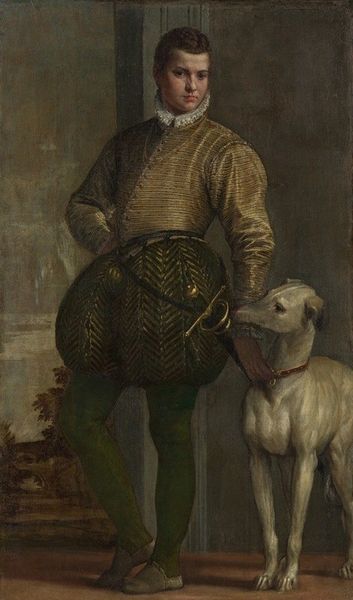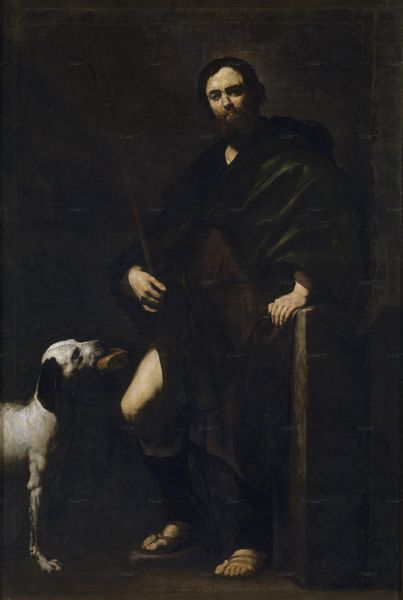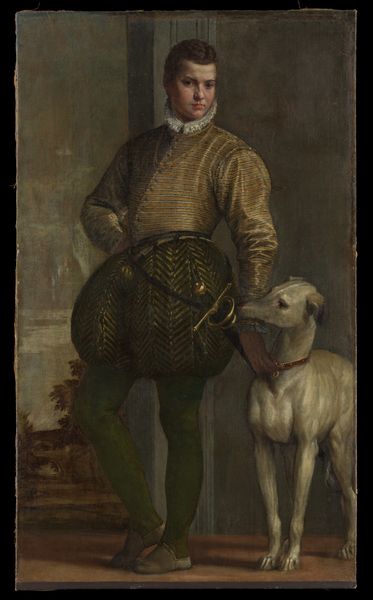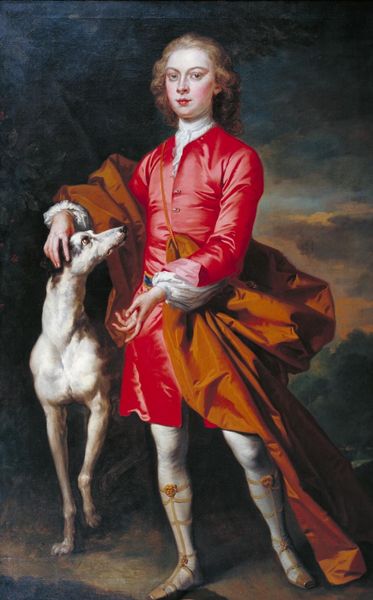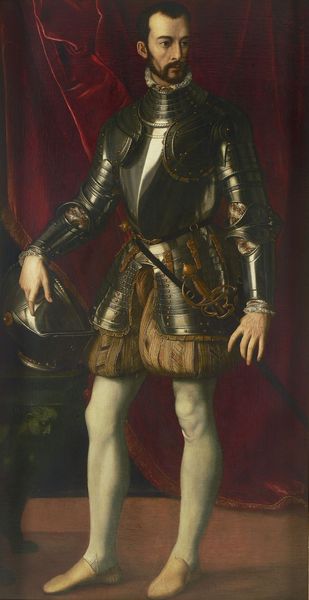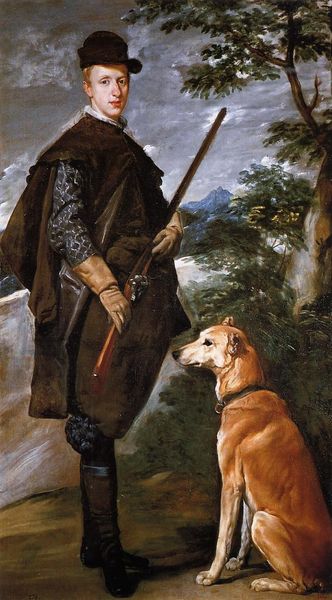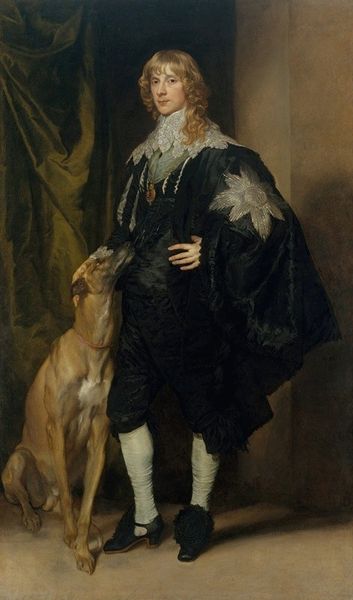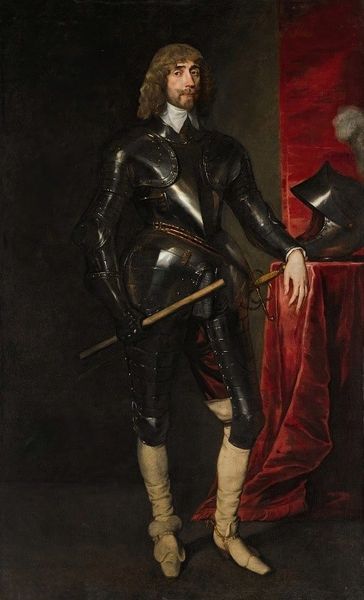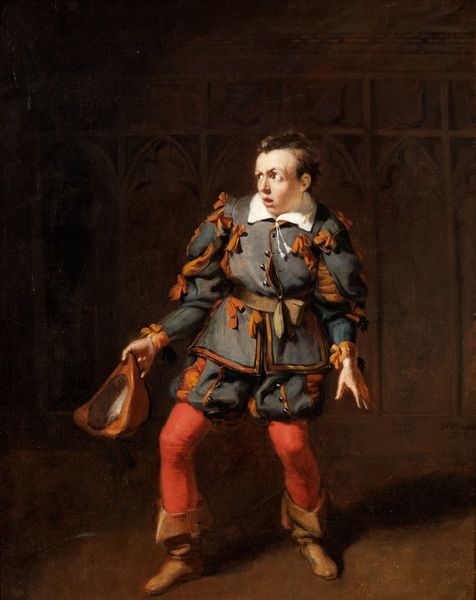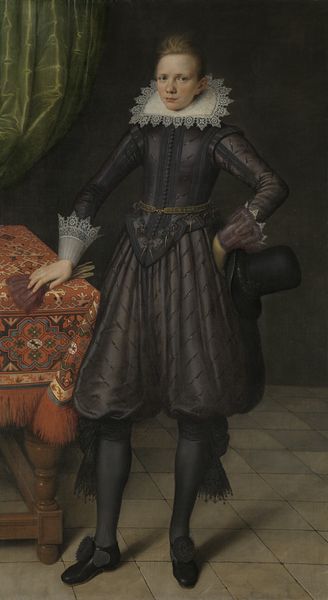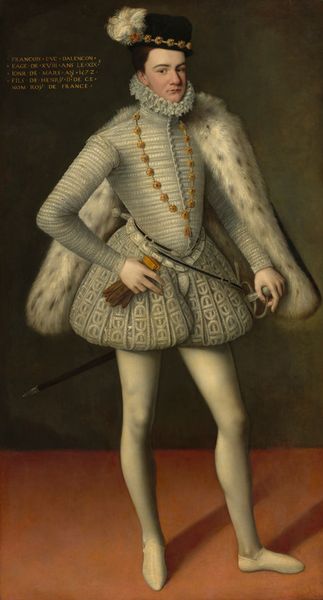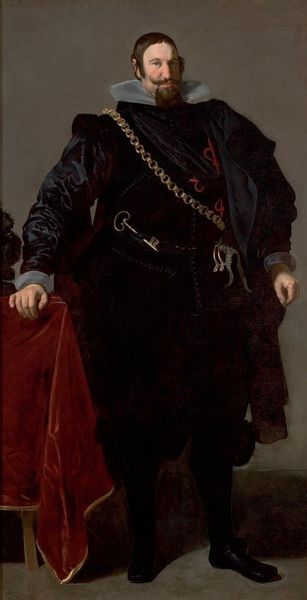
painting, oil-paint
#
portrait
#
allegory
#
painting
#
oil-paint
#
mannerism
#
figuration
#
11_renaissance
#
group-portraits
#
history-painting
#
academic-art
#
italian-renaissance
Dimensions: 197.5 x 114.9 cm
Copyright: Public domain
Editor: Here we have Bartolomeo Passerotti’s "Portrait of a Cavalier with his Hunting Dogs," created in 1580 using oil paint. What I find really fascinating is the intricate detailing in the cavalier’s attire - it seems almost like armor, yet it’s fabric. What strikes you most about this painting? Curator: I'm immediately drawn to the socio-economic implications of the materials used. The quality of the pigment in the oil paint itself signals wealth. And look at the Cavalier's clothing. Consider the labor required to produce such elaborate garments, the specialized skills of the tailors, the cost of the fabrics themselves. This portrait isn't just about individual identity, but a statement about access to resources and the exploitation of labor within 16th century Bolognese society. Editor: That’s an interesting point. The detail is amazing, but I hadn't considered what it represents in terms of production and wealth. Curator: Absolutely. And consider the dogs – these aren't just pets, they represent a lifestyle sustained by vast land ownership and the labour of many others for hunting. Notice how the application of paint creates texture – the smooth finish on the skin contrasting sharply with the detail on his clothes. It highlights how important visual and tactile representation of such textiles were for signaling social standing. Does that layering draw your attention, too? Editor: It definitely does now that you point it out! It really does bring the different elements forward in a more complex way. It's incredible how much can be gleaned from focusing on the materials and the way they're presented. Curator: Exactly! The “how” and “what” are often inextricably linked. Focusing on the materiality shifts the perspective away from a simple celebration of nobility, and asks us to think about how that nobility was materially constructed and sustained. Editor: Thanks. It’s helped me consider aspects I hadn’t really thought about previously. Curator: Indeed, understanding art through its material reality reveals much about the values and structures of its time.
Comments
No comments
Be the first to comment and join the conversation on the ultimate creative platform.

